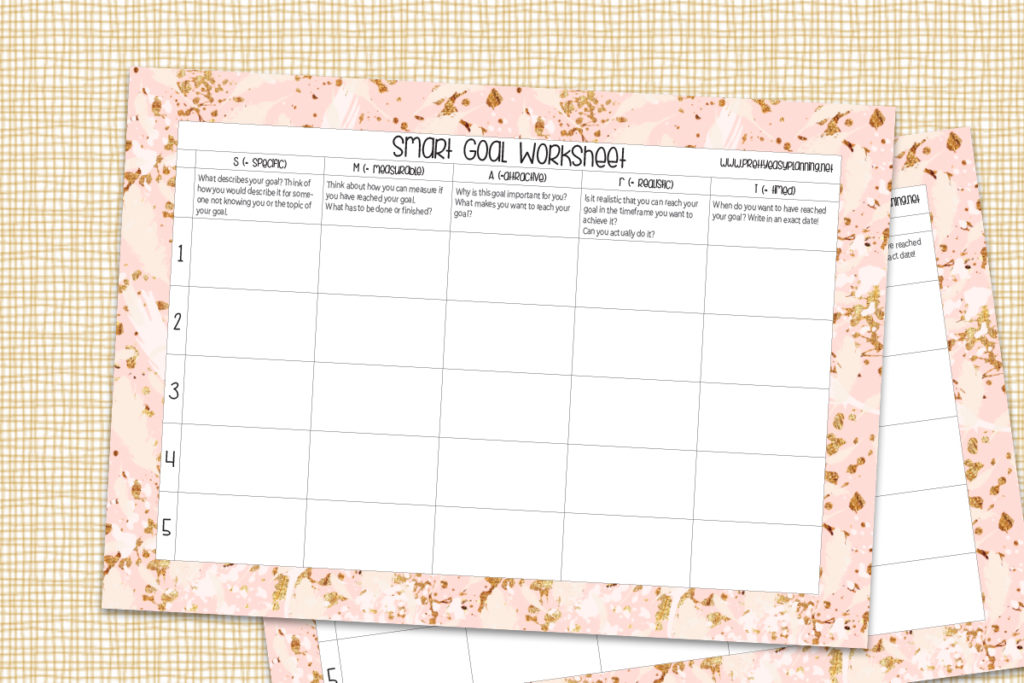In this blog post I want to reveal the big secret of why we are not successful in following up to our set goals.
During the past few weeks, I noticed that a lot of people in the planner community are revisiting their set goals from the beginning of the year. Some might say, that’s only logical due to what has happened in the first half of 2020 so far. I say, it’s not.
Looking back on your new year’s resolutions, how many of them did you follow through until today? There may be something like “loose weight” or “eat healthier” or something similar on your list.
Let me show you how you can set goals that you actually will follow through:
SMART is actually an acronym originating in project management. But since everything we do is kind of like a project, this principle applies to almost everything in our world.
| S | specific |
| M | measurable |
| A | attractive |
| R | reachable |
| T | timed |
The key to effective goals lies in how you formulate them. Let’s start with the easiest one: timed. Set yourself a specific day by which you want to have the goal reached.
Do not tell yourself “by the end of the month/week/year” as our brain will not understand it. Use a specific date, for example, August 31st, 2020. You’ll notice: it’s more urgent now as if I had used the “end of August”, am I right?
Of course, you want to set yourself a goal that you can actually reach by the date you just have specified. Otherwise, it’s useless to try. Think about what you can do in the timespan until your goal-date. For example, if you want to deep clean your whole house this could work until August 31st, but it also could not if you have to work a lot of hours until then.
What makes a goal attractive? Well, just think about your “why”. What drives you to complete your goal? What benefit do you see in reaching your goal? If we stay with our example about deep cleaning your house the “why” could be something like “… because I want to live in a beautiful, well-kept home…”

The next step is a crucial one: your goal has to be measurable. How can you know if you have already reached your goal if you have no way of knowing which criteria you want to meet in order to be done with your work? In our example it could be that you defined that every room has to be tidied, each cupboard and closet sorted and all the windows have been cleaned.
Lastly, each goal you set yourself has to be specific. “Living healthier” is not specific. “Working out regularly” is not specific. “Clean the house” is not specific. “Deep clean every room in the house” is specific. Did you notice the difference? Of course, you can formulate your goal even more detailed to be more specific.
If we now take all the steps to formulate our example goal it reads like this:
I want to deep clean every room in the house (tidy each room, dust cupboards, sort closets and clean the windows) to live in a beautiful, well kept home by August 31st, 2020.
Example

In order to make it a little easier for you to formulate your personal SMART goals, I have created a worksheet. Get your copy into you inbox right away!
So, what is your personal SMART-goal? Let me know in the comments below!